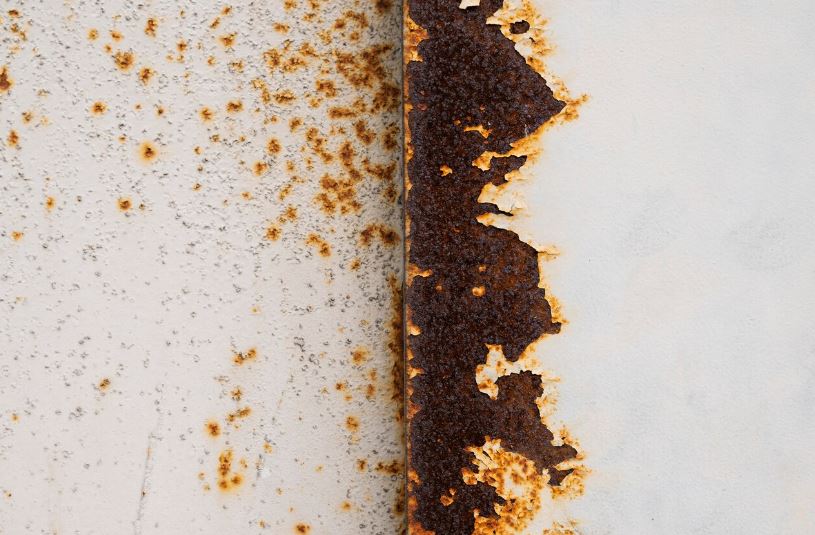Understanding Corrosion Protection
What is Corrosion?
Corrosion is a natural process that involves the degradation of metals due to chemical reactions with their environment. Commonly observed as rusting in iron and steel, corrosion can significantly impact the structural integrity, safety, and longevity of various materials. This process is not limited to metals; other materials, including ceramics and polymers, can also degrade, albeit through different mechanisms. Understanding the types and causes of corrosion is essential for developing effective protection strategies.
Causes of Corrosion
Corrosion occurs through various mechanisms, often influenced by environmental factors such as moisture, oxygen, and pollutants. The main types of corrosion include:
- Uniform Corrosion: This is the most common form, where the metal corrodes evenly across its surface. It is relatively easy to predict and control.
- Galvanic Corrosion: Occurs when two dissimilar metals are in electrical contact in the presence of an electrolyte. The less noble metal corrodes faster, while the more noble metal remains protected.
- Pitting Corrosion: Characterized by localized attacks that create small pits or holes in the metal. This type of corrosion can be particularly dangerous as it is difficult to detect and can lead to sudden failures.
- Crevice Corrosion: Happens in confined spaces where access to the working fluid is restricted, leading to differential aeration and aggressive localized attack.
- Stress Corrosion Cracking: A result of the combined effects of tensile stress and a corrosive environment, leading to brittle fracture of the material.
Understanding these types helps in identifying the appropriate protection methods to be used.
Methods of Corrosion Protection
Corrosion protection can be achieved through various methods, each suited to different environments and materials. The most common methods include:
- Coatings and Linings:
- Paints and Epoxy Coatings: These provide a physical barrier to prevent corrosive substances from reaching the metal surface. Modern coatings can be tailored for specific environments, offering enhanced protection.
- Galvanizing: Involves coating steel with a layer of zinc, which corrodes preferentially, protecting the underlying metal. Galvanized coatings can last for decades and are commonly used in construction and automotive industries.
- Powder Coating: An advanced method where powdered paint is electrostatically applied and then cured under heat, creating a hard, durable finish. This method is highly resistant to chipping, scratching, and fading.
- Cathodic Protection:
- Sacrificial Anodes: A more reactive metal (such as magnesium or zinc) is placed in contact with the protected metal. The anode corrodes instead of the protected metal, thus offering protection.
- Impressed Current Cathodic Protection (ICCP): Uses an external power source to provide a continuous flow of electrical current, mitigating corrosion. ICCP is commonly used in pipelines, storage tanks, and marine structures.
- Material Selection:
- Choosing materials inherently resistant to corrosion, such as stainless steel, titanium, or certain alloys, can eliminate the need for additional protective measures. This approach is particularly useful in highly corrosive environments like chemical processing plants.
- Corrosion Inhibitors:
- Chemicals that slow down the chemical reactions causing corrosion can be added to the environment. These inhibitors are particularly useful in closed systems like boilers and cooling towers, where they form a protective film on the metal surface.
- Environmental Control:
- Controlling the environment to reduce corrosive elements such as humidity, pollutants, and temperature can significantly reduce corrosion rates. This method is often used in combination with other protective measures.
Monitoring and Maintenance
Effective corrosion protection also involves regular monitoring and maintenance to ensure that protective measures remain effective. Techniques such as:
- Electrochemical Measurements: Used to monitor the corrosion rate and effectiveness of protective systems. Techniques like Linear Polarization Resistance (LPR) and Electrochemical Impedance Spectroscopy (EIS) are commonly used.
- Ultrasonic Testing: Helps in detecting thickness loss in materials. This non-destructive method is useful for inspecting pipelines, tanks, and other critical infrastructure.
- Visual Inspections: Regular checks to identify early signs of corrosion and damage. Trained inspectors look for signs of rust, pitting, and other forms of degradation.
Timely maintenance ensures that protection systems remain effective and can extend the life of the assets.
AC Mitigation in Corrosion Protection
What is AC Mitigation?
Alternating Current (AC) mitigation is a crucial aspect of corrosion protection, particularly for buried pipelines and structures in proximity to high-voltage power lines. AC interference can accelerate corrosion rates and pose safety risks. AC mitigation involves techniques to reduce or eliminate the adverse effects of AC interference.
Causes of AC Interference
AC interference occurs when metallic structures are subjected to electromagnetic fields generated by nearby high-voltage power lines. This can induce AC voltage on the pipeline, leading to:
- AC Corrosion: Accelerated corrosion due to alternating current. This type of corrosion can occur even at low AC voltages and is characterized by localized attacks that can quickly penetrate the metal.
- Electrical Shock Hazards: Increased risk of electric shocks to personnel. This is particularly concerning for maintenance workers and engineers who might come into contact with the affected structures.
- Equipment Damage: Potential damage to monitoring and control equipment due to induced voltages and currents.
AC Mitigation Techniques
- Decoupling Devices:
- AC Mitigation Reactors: These devices allow the AC current to pass through while blocking the direct current (DC), thus reducing the AC potential on the pipeline. They are commonly used in conjunction with cathodic protection systems.
- Surge Arresters: Protect against transient over-voltages caused by lightning or switching operations. These devices help prevent equipment damage and reduce the risk of electrical shock.
- Grounding Systems:
- Grounding Mats and Rods: Provide a low-resistance path for AC to dissipate into the earth, reducing the potential difference. Properly designed grounding systems are essential for effective AC mitigation.
- Gradient Control Wires: Placed along the pipeline to equalize the potential and reduce AC interference. These wires help distribute the AC current more evenly, minimizing localized corrosion.
- Coatings and Insulation:
- Applying specialized coatings that provide electrical insulation can reduce the effects of AC interference. These coatings are designed to withstand high voltages and protect the underlying metal.
- Cathodic Protection Systems:
- Integrating AC mitigation measures with existing cathodic protection systems ensures comprehensive protection. This integration helps address both DC-induced and AC-induced corrosion simultaneously.
Benefits of AC Mitigation
Implementing AC mitigation techniques provides several benefits:
- Enhanced Safety: Reduces the risk of electrical shocks to personnel working near the pipelines. This is especially important in high-risk environments such as refineries and chemical plants.
- Improved Asset Longevity: Minimizes AC-induced corrosion, extending the life of the structures. By reducing the rate of corrosion, maintenance costs and downtime are also reduced.
- Compliance with Standards: Ensures compliance with industry standards and regulations regarding AC interference. This compliance is critical for maintaining operational permits and avoiding legal liabilities.
Monitoring and Maintenance
Just like general corrosion protection, AC mitigation requires ongoing monitoring and maintenance to ensure effectiveness. Techniques include:
- Voltage Measurements: Regularly measuring the AC voltage on the pipeline to ensure it remains within safe limits. These measurements help identify potential issues early and allow for timely corrective actions.
- Inspection of Mitigation Devices: Checking the condition and functionality of decoupling devices, grounding systems, and coatings. Regular inspections help ensure that all components are working as intended.
- Data Analysis: Using data from monitoring systems to identify trends and potential issues early. Advanced analytics can help predict future problems and optimize maintenance schedules.
Conclusion
Corrosion protection is a critical aspect of maintaining the integrity and longevity of metallic structures across various industries. Implementing effective corrosion protection methods, such as coatings, cathodic protection, and material selection, can significantly reduce the risks associated with corrosion.Regular monitoring and maintenance are indispensable components of both corrosion protection and AC mitigation strategies. By ensuring these systems are in place and functioning correctly, industries can safeguard their infrastructure, reduce maintenance costs, and ensure compliance with safety and regulatory standards. Investing in comprehensive corrosion protection and AC mitigation strategies is not only a matter of preserving assets but also a critical component of operational safety and efficiency.



